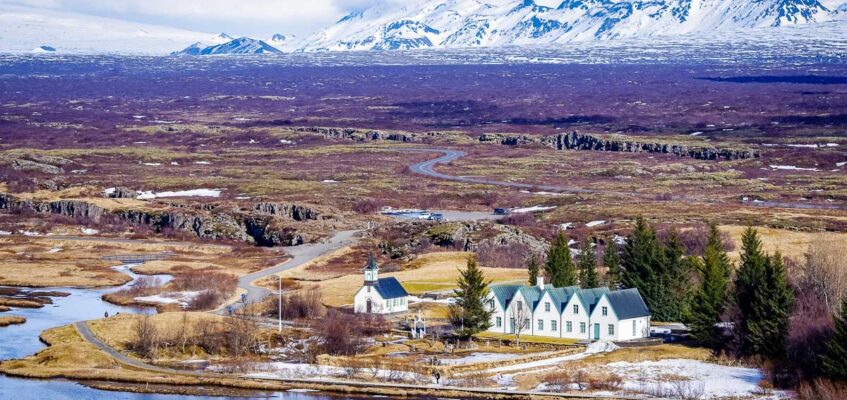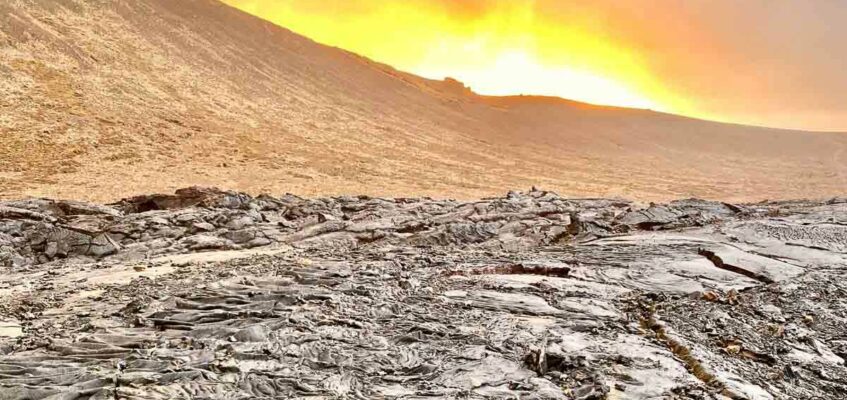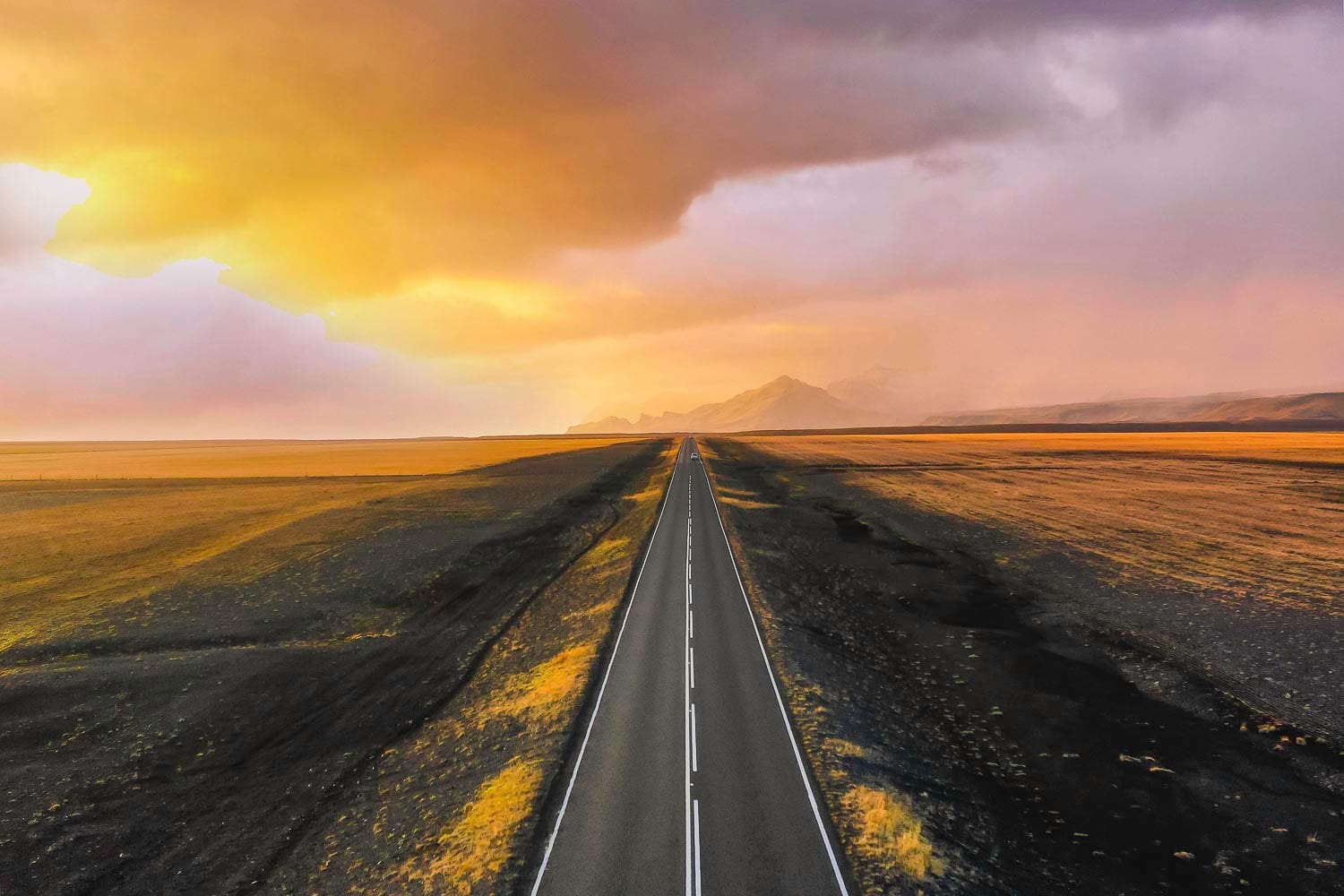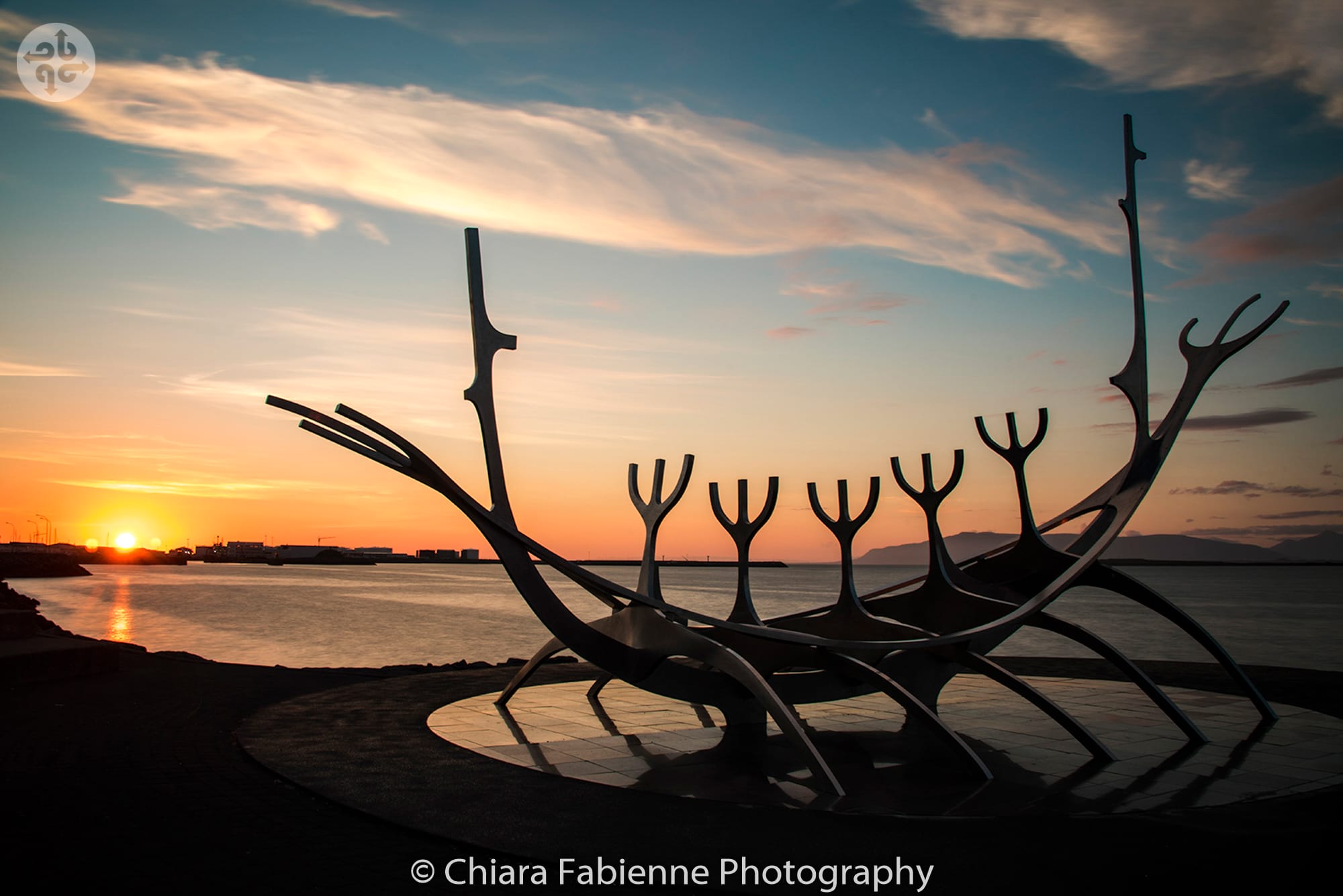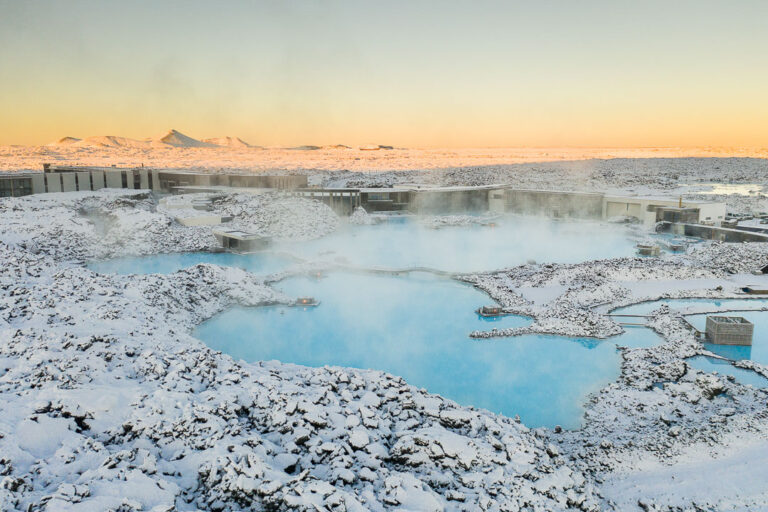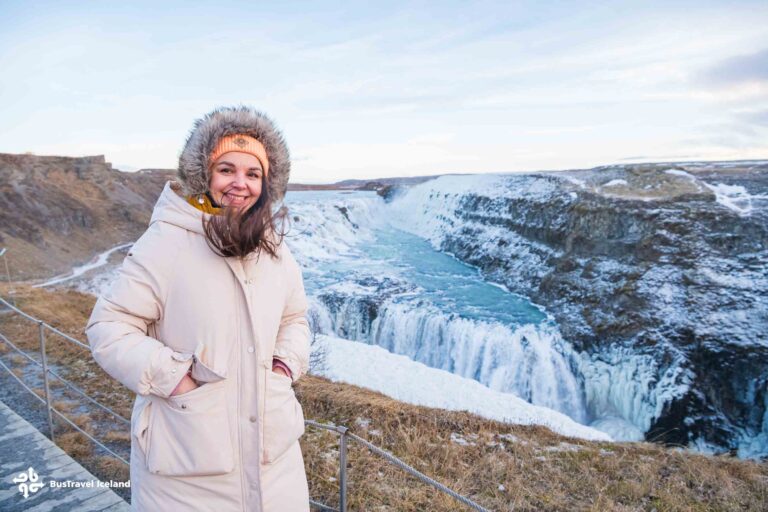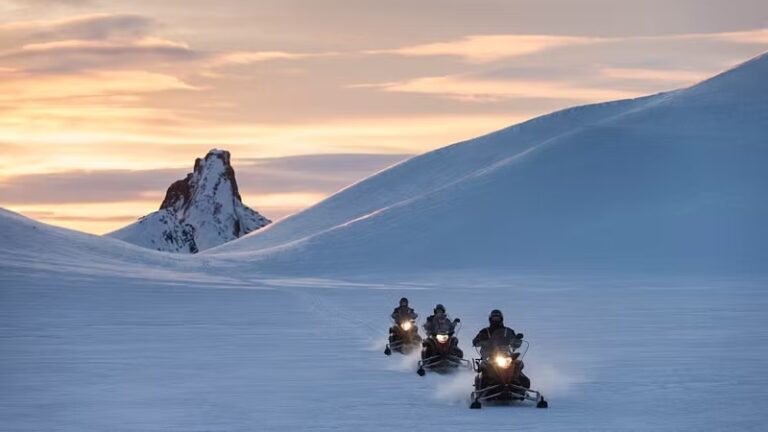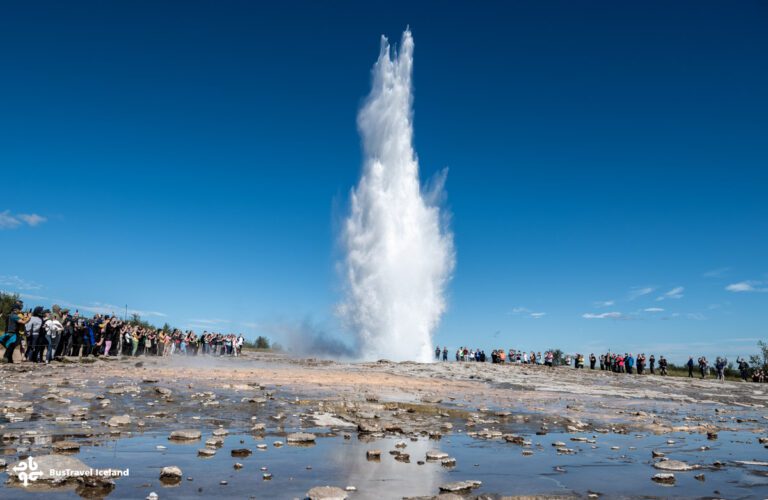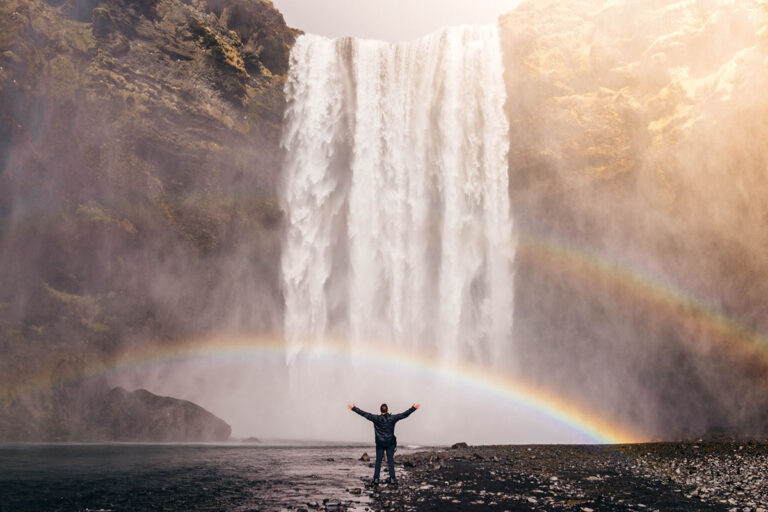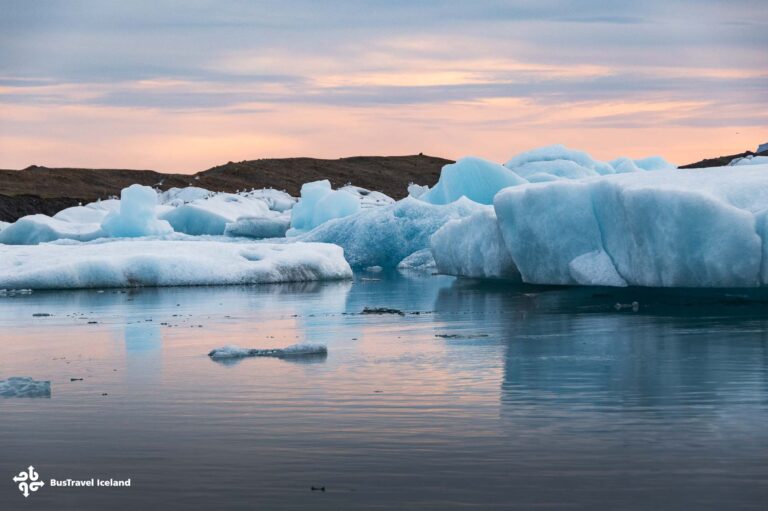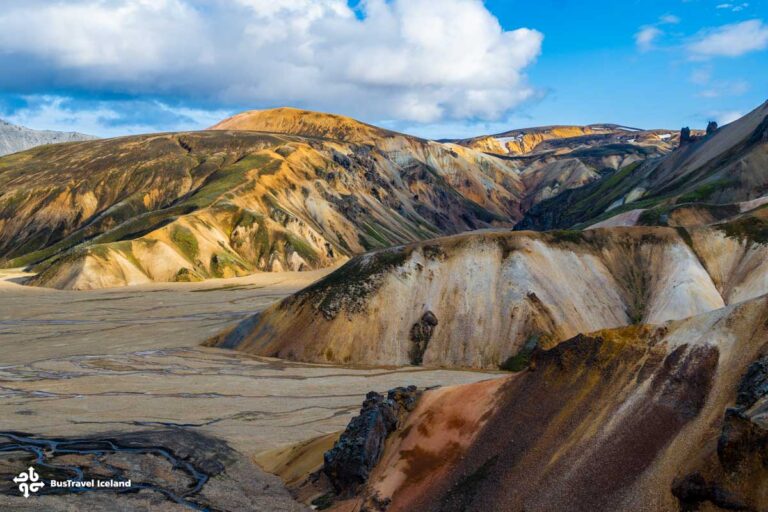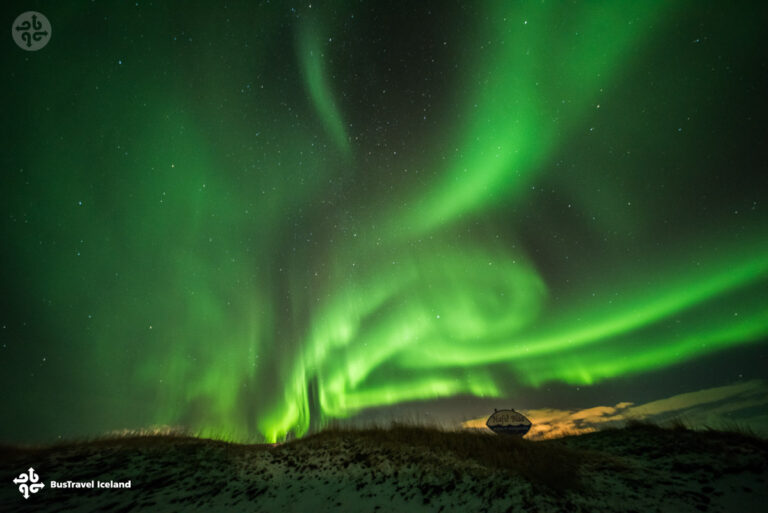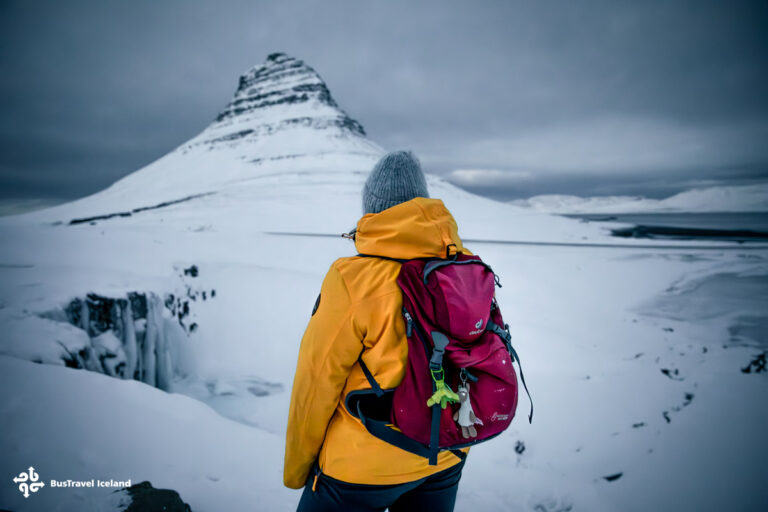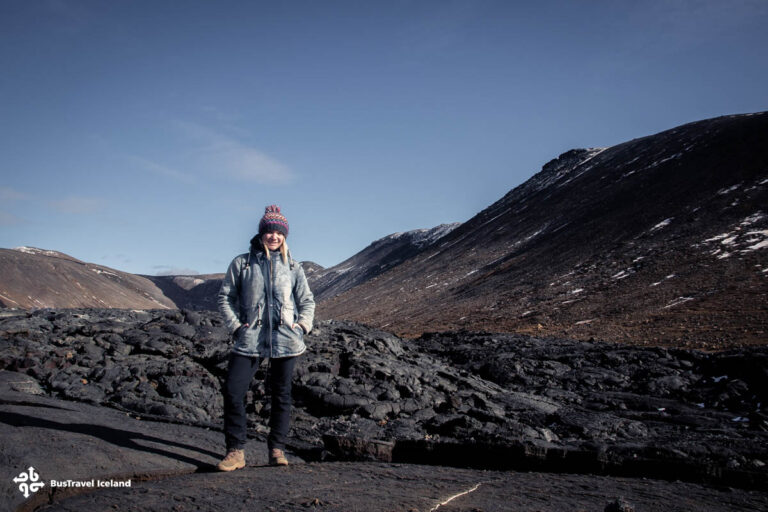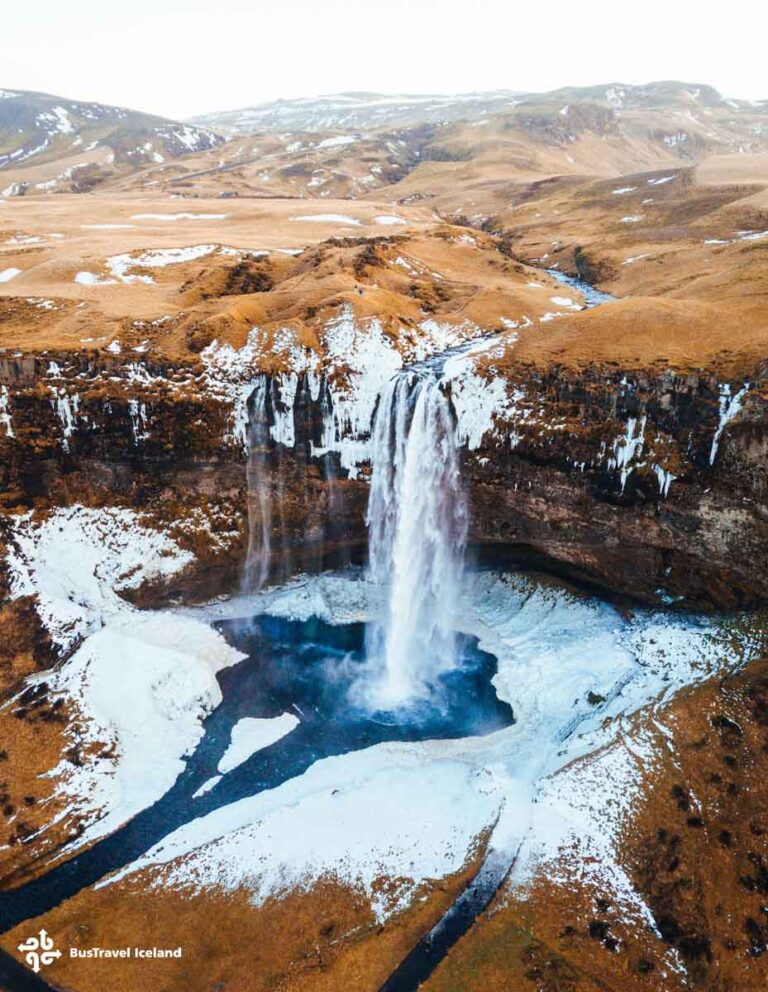Gullfoss Waterfall: Iceland’s Majestic Natural Wonder
- Golden Circle Iceland
- 29 Aug 2023

Gullfoss, often referred to as the Golden Waterfall, is an iconic natural landmark in Iceland, presenting a remarkable display where the Hvítá River cascades into a deep canyon. Our exploration begins with its precise location, followed by its significance within the popular Golden Circle route.
Where is Gullfoss Waterfall located?
Gullfoss is situated in the great canyon of the Hvítá river in southwest Iceland. The waterfall forms when the tranquil river dramatically plunges in two stages—first a 11-meter drop, then a 21-meter tumble—into a rugged canyon with walls reaching up to 70 meters in height.
Drive time from Reykjavík is around 2 hours.
The waterfall is a key attraction on the Golden Circle route, a popular tourist route from Reykjavik, which also includes other significant sites such as Geysir, where Strokkur erupts every 10 minutes or so, and Thingvellir National Park, known for its historical and geological importance.
Gullfoss has a convenient visitor center with shopping and dining, making it a good lunch location for those doing the whole Golden Circle.
BusTravel Iceland includes a stop at Geysir on all our Golden Circle tours.
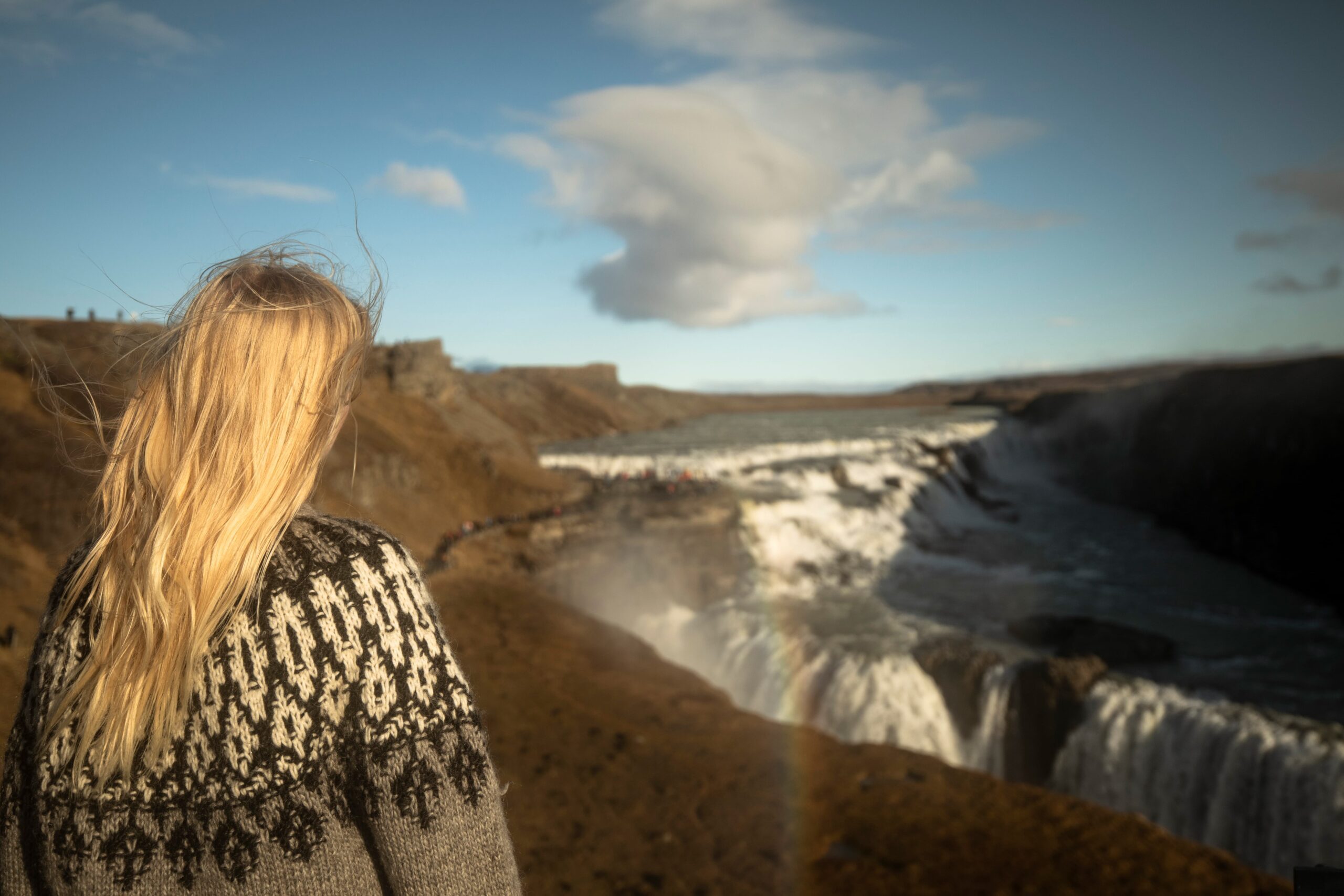
Gullfoss: Spectacular natural features
Gullfoss, famed for its magnificence, offers a dramatic spectacle of nature’s power with its substantial water flow and the cascading two-stage fall within a rugged canyon. Here we’ll describe the striking characteristics of the waterfall itself and the distinctive features of the surrounding landscape.
Gullfoss is characterized by two separate stages of drops, creating a multi-tiered display of force and beauty. The upper tier boasts an impressive 11-meter (36 feet) drop, while the lower tier descends sharply by 21 meters (69 feet). Together, they form a staggered descent, which when viewed from above appears almost staircase-like in nature.
The width of the waterfall varies, at points reaching up to 800 feet (244 meters) as the Hvítá river expands before funneling into the narrow Gullfossgjúfur canyon. The average water flow of Gullfoss can be substantial, often surpassing 140 cubic meters per second, contributing to the waterfall’s grandeur and the continuous erosion of the canyon walls.
Surrounding Landscape
Gullfoss waterfall plunges into the Gullfossgjúfur canyon, creating a stunning backdrop. The canyon walls, which rise up to 70 meters (230 feet) high, frame the falls and enhance the visual impact of the water’s power. This canyon, carved through persistent erosive forces, extends approximately 2.5 kilometers down the course of the Hvítá river.
The Hvítá river canyon itself has been shaped over thousands of years, boasting sheer faces and rugged terrain that complements the wild beauty of Gullfoss. The interaction between the waterfall’s immense flow and the surrounding geology is a testament to the dynamic and evolving landscape of Iceland.

Natural Phenomena
At Gullfoss, we witness water’s majestic journey and the Earth’s persistent evolution—important reminders of nature’s enduring power.
Water Dynamics
Gullfoss, one of Iceland’s most iconic waterfalls, showcases the immense strength of glacial rivers. Originating from Langjökull glacier, the river Hvítá manages a spectacular feat. On average, the river channels water flow at around 109 cubic meters per second, demonstrating both powerful water dynamics and the capacity of glacial meltwater. Particularly in summer, the flow can be more pronounced, often leading to minor floods as the meltwater increases. Our understanding of Gullfoss’ might deepens when we consider a historical event where the waterfall’s flow increased to an estimated 2000 cubic meters per second during a great flood in 1930.
Geological Changes
We observe the Hvítá River Canyon—carved by the same forces of erosion that feed the waterfall. This canyon is a testament to the lasting impact of the water flow over millennia, stemming from the last Ice Age. The walls of the canyon, which the Hvítá river traverses before plummeting into Gullfoss, have been shaped through continuous erosion over thousands of years. The two-tiered falls drop a total of 32 meters in a dramatic display, but it is the relentless flow and the pressure it exerts on the surrounding rock that subtly reshape the landscape, making Gullfoss not just a static spectacle but a dynamic participant in Iceland’s geological narrative.

The best time of year to visit Gullfoss waterfall
At Gullfoss Waterfall, we witness the dramatic interplay of nature as the seasons change, transforming the landscape with shifting weather patterns and sunlight. Both summer and winter offer unique experiences, with variations in the waterfall’s spray, the presence of rainbows, and the surrounding crowds.
The best time to visit Gullfoss Waterfall really depends on what we’re looking for. In summer, longer daylight hours provide ample time for us to explore the viewpoints and enjoy the vibrant rainbows cast by the waterfall’s spray. Conversely, winter offers a more serene experience where we may catch the waterfall amidst a frosted Ice Age-like landscape, though certain pathways may be closed due to ice.
In short, there is no bad time to visit this natural wonder.
Summer at Gullfoss
During summer, we can expect warmer weather and more consistent sunlight, making it a popular time for tourists, which means larger crowds. This season brings out the full force of the waterfall with a more robust spray and frequent displays of rainbows arcing across the falls. The summer months are also less prone to floods, allowing safe access to all viewpoints.
Winter at Gullfoss
Winter transforms Gullfoss into a starkly beautiful landscape, encapsulating an almost mystical quality. The mist and spray from the falls freeze, creating a unique ice formation around the canyon. Despite the risk of some areas being inaccessible, the viewpoints that are open provide us with a breathtakingly different perspective of the falls. Reduced daylight and sub-zero temperatures mean we must plan our visit carefully, but the experience offers a quieter, more introspective visit.
Gullfoss Waterfall in history
In this section, we will explore the rich history of Gullfoss, often referred to as the Golden Falls. We’ll delve into its discovery and the origins of its name, followed by a closer look at the significant conservation efforts that have shaped its preservation.
Discovery and Name
The majestic Gullfoss Waterfall, prominent in Icelandic heritage, owes its name to the golden hue that often graces its waters. The origin of “Golden Falls” is attributed to the way daylight can make the water shimmer like gold, a view that encapsulates the waterfall’s ethereal beauty. Historically, Gullfoss was known to locals but gained wider recognition when Tómas Tómasson, a farmer who owned Gullfoss in the late 19th and early 20th centuries, highlighted its significance.
Conservation Efforts
Gullfoss is not just a natural wonder but also a testament to early environmentalism in Iceland. Sigríður Tómasdóttir, the daughter of Tómas Tómasson, played a crucial role in its conservation. In the early 20th century, foreign investors sought to utilize Gullfoss for generating electricity. Sigríður, recognized as Iceland’s first environmentalist, fought tirelessly against the establishment of a hydroelectric plant on the falls. Amplifying her efforts, she hired a lawyer and even threatened to throw herself into the falls should the natural beauty be compromised. Our understanding of Gullfoss’s history remains closely tied to her unwavering resolve to protect it. Her advocacy, which is part of a broader history of environmental conservation in Iceland, ultimately led to the preservation of the falls’ untouched splendor for all to cherish.

